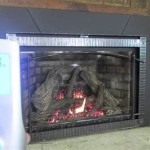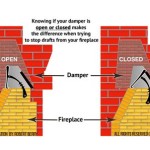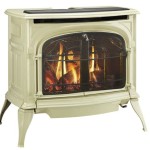Best Ways to Clean Bricks Around a Fireplace
The brickwork surrounding a fireplace often becomes stained with soot, ash, and grime, diminishing the aesthetic appeal of the hearth. Regular cleaning is necessary to maintain the brick's appearance and prevent permanent damage caused by the buildup of these byproducts of combustion. Several methods exist for cleaning fireplace bricks, each with its own advantages and disadvantages. The optimal approach depends on the severity of the staining, the type of brick, and the resources available.
Assessing the Brick and Stain
Before initiating any cleaning process, a thorough assessment of the brick is crucial. Different types of bricks react differently to various cleaning agents. Some bricks are more porous than others, and certain cleaning solutions can damage or discolor them. Identifying the type of stain is also important. Soot and ash require different cleaning strategies than, for instance, mineral deposits or discoloration from previous cleaning attempts. A preliminary inspection can prevent unintended damage and ensure the selection of the most effective cleaning method.
The type of brick can often be determined by its color, texture, and age. Older bricks are generally more porous and may require gentler cleaning methods. Newer bricks are often sealed or treated to resist staining. Conduct a small test in an inconspicuous area to gauge the brick's reaction to a proposed cleaning solution. A simple test involves applying a small amount of the cleaning agent to a hidden area and observing any discoloration, etching, or other adverse effects. If any damage is observed, a milder cleaning method should be considered.
The nature of the stain dictates the cleaning agent needed. Soot and ash, being carbon-based, are best addressed with alkaline cleaners. Mineral deposits, on the other hand, require acidic cleaners. Grease and oil stains necessitate the use of degreasers. Identifying the primary component of the stain enables the selection of a cleaning agent that will effectively break down the residue without damaging the brick.
Dry Cleaning Methods
For light soot accumulation and loose debris, dry cleaning methods are often sufficient and are the least invasive approach. These methods minimize the risk of water damage and are well-suited for porous bricks. Dry cleaning involves using tools such as wire brushes, scrub brushes, and vacuums to remove surface contaminants.
A wire brush can be used to loosen and remove encrusted soot and ash. It is imperative to use a brush with soft bristles to avoid scratching the brick surface. A stiff-bristled brush can damage the brick, particularly softer varieties. The brushing should be performed in a consistent, back-and-forth motion, focusing on areas with heavy staining. Regularly clean the brush to prevent the re-deposition of soot onto the brick.
After brushing, a scrub brush can be used to further dislodge remaining debris. A scrub brush with nylon bristles is a good choice, providing sufficient abrasion without being overly aggressive. As with the wire brush, maintain a consistent scrubbing motion and clean the brush frequently. This step helps to remove finer particles of soot and ash that the wire brush might have missed.
Vacuuming is an essential step in dry cleaning. Use a vacuum cleaner with a brush attachment to remove all loose particles of soot and ash. This prevents the debris from being spread around the room or becoming embedded deeper into the brick during subsequent wet cleaning. The vacuuming should be thorough, covering all surfaces of the brick and surrounding areas.
Wet Cleaning Methods
For more stubborn stains, wet cleaning methods are often necessary. Wet cleaning involves using a cleaning solution and water to dissolve and remove the stain. Several cleaning solutions are suitable for fireplace brick, ranging from household cleaners to specialized brick cleaners. The choice of cleaning solution depends on the severity of the stain and the type of brick. Protective gear, including gloves and eye protection, should be worn during wet cleaning to prevent skin irritation and eye damage.
One common wet cleaning method involves using a mixture of dish soap and water. This is a gentle cleaning solution suitable for light to moderate staining. Add a small amount of dish soap to a bucket of warm water and mix thoroughly. Apply the solution to the brick using a sponge or scrub brush. Scrub the brick in a circular motion, focusing on areas with heavy staining. Rinse the brick thoroughly with clean water to remove all traces of the soap solution. Failure to rinse completely can leave a residue that attracts dirt and grime.
For more stubborn stains, a solution of trisodium phosphate (TSP) and water can be used. TSP is a strong alkaline cleaner that effectively removes soot and grease. However, TSP is a harsh chemical and should be used with caution. Always wear gloves and eye protection when using TSP. Mix the TSP with water according to the manufacturer's instructions. Apply the solution to the brick using a sponge or scrub brush. Allow the solution to sit for a few minutes to dissolve the stain. Scrub the brick thoroughly and rinse with clean water. TSP can etch or discolor certain types of brick, so it is essential to test the solution in an inconspicuous area before applying it to the entire surface.
Another option is to use a commercial brick cleaner. These cleaners are specifically formulated to remove stains from brick and are available at most hardware stores. Follow the manufacturer's instructions carefully when using a commercial brick cleaner. Some commercial cleaners contain harsh chemicals and require special handling. Always test the cleaner in an inconspicuous area before applying it to the entire surface.
When using any wet cleaning method, it is important to work in small sections. This prevents the cleaning solution from drying on the brick before it can be rinsed off. Drying cleaning solution can leave a residue that is difficult to remove and can potentially damage the brick. Work systematically, cleaning one section at a time and rinsing thoroughly before moving on to the next section.
Specialized Cleaning Techniques
In situations where conventional cleaning methods prove ineffective, specialized cleaning techniques may be necessary. These techniques often involve the use of specialized equipment or chemicals and should be performed with caution. One such technique is the use of a pressure washer. Pressure washing can effectively remove stubborn stains and grime from brick, but it can also damage the brick if not done properly. Another specialized technique involves the use of muriatic acid. Muriatic acid is a strong acid that can dissolve mineral deposits and other stubborn stains. However, muriatic acid is highly corrosive and should be used with extreme caution.
Pressure washing should only be considered for durable brick types that can withstand the high pressure of the water stream. Before pressure washing, test the pressure on a small, inconspicuous area to ensure that it does not damage the brick. Use a wide-angle nozzle and keep the pressure relatively low. Avoid directing the water stream at cracks or crevices in the brick, as this can force water into the brick and cause further damage. After pressure washing, allow the brick to dry completely before applying any sealant or protective coating.
Muriatic acid should only be used as a last resort and only by individuals experienced in its handling. Muriatic acid is highly corrosive and can cause severe burns to the skin and eyes. Always wear appropriate protective gear, including gloves, eye protection, and a respirator, when using muriatic acid. Dilute the muriatic acid with water according to the manufacturer's instructions. Apply the solution to the brick using a brush or sponge. Allow the solution to sit for a few minutes to dissolve the stain. Rinse the brick thoroughly with clean water. Neutralize the acid with a solution of baking soda and water after cleaning. Dispose of the acid waste properly to prevent environmental contamination.
Another specialized cleaning technique is poulticing. Poulticing involves applying a paste made of absorbent material and a cleaning agent to the stained area. The paste draws the stain out of the brick as it dries. Various absorbent materials can be used, including diatomaceous earth, baking soda, and talcum powder. The choice of cleaning agent depends on the type of stain. For example, a poultice made with hydrogen peroxide can be used to remove rust stains. Apply the poultice to the stained area and cover it with plastic wrap. Allow the poultice to dry completely, which can take several hours or even days. Remove the dried poultice and rinse the brick thoroughly with clean water.

How To Clean A Fireplace Diy Basics

Mortar Wash Brick Fireplace Makeover Dimples And Tangles

How To Clean Fireplace Bricks Simple Practical Beautiful

How To Clean Fireplace Bricks 9 Steps With S Wikihow

How To Clean Brick Fireplace Royal Stone Care

How To Clean Brick The Home Depot

How To Clean Brick The Home Depot

How To Clean A Brick Fireplace With Scrubbing Bubbles 2024 Today S Homeowner

The Best Way To Clean Fireplace Bricks Dreifuss Fireplaces

How To Clean Fireplace Bricks Cleanup Team
Related Posts








